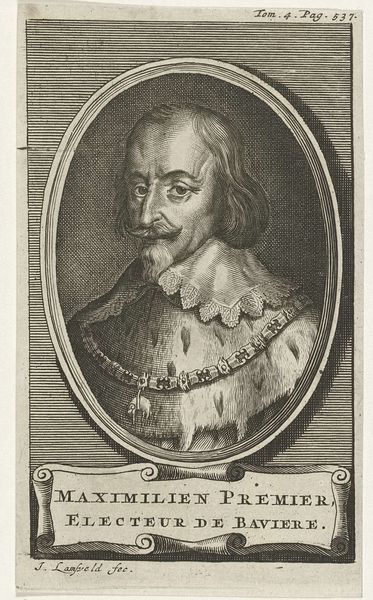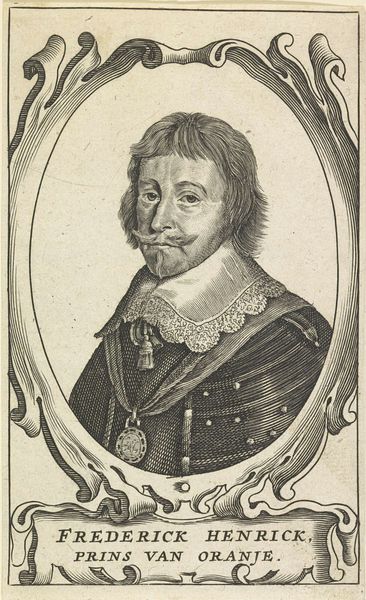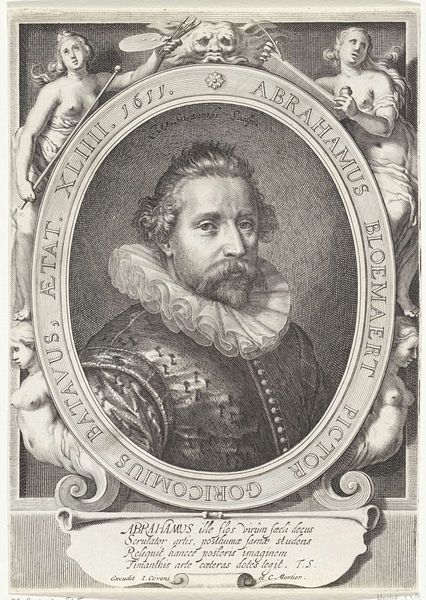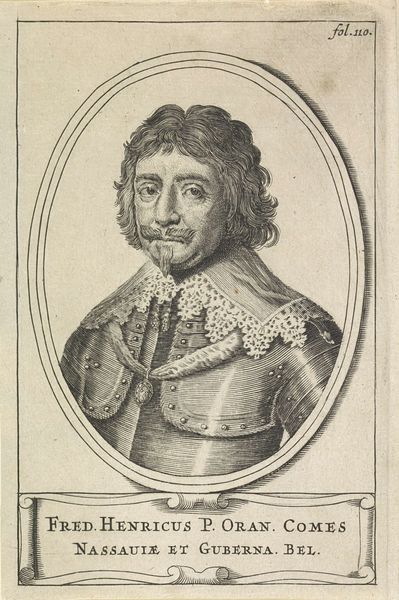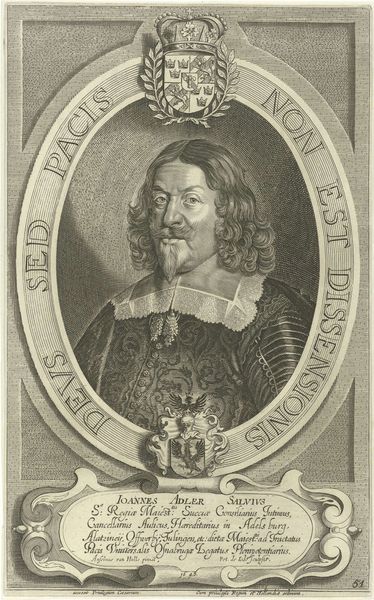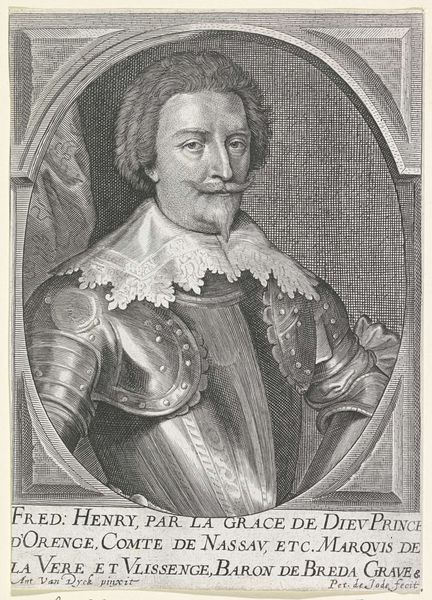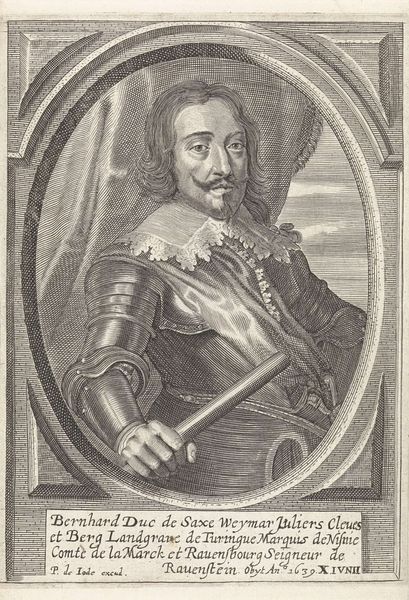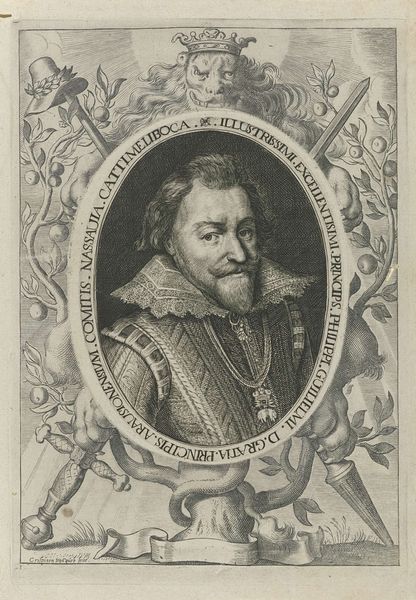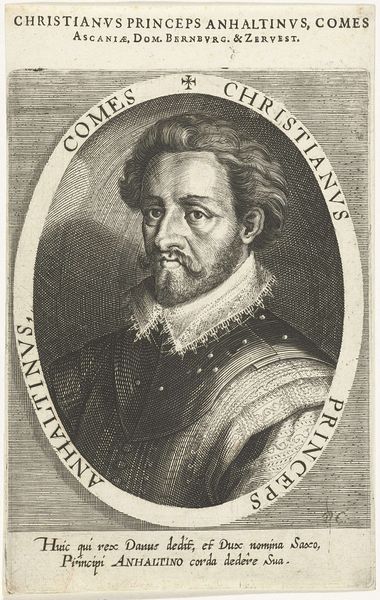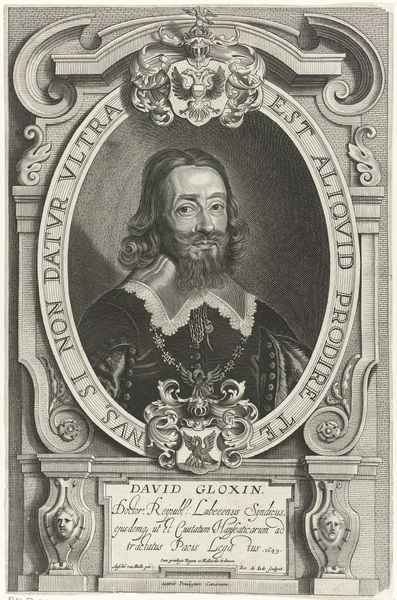
engraving
#
portrait
#
baroque
#
dutch-golden-age
#
old engraving style
#
portrait reference
#
19th century
#
line
#
history-painting
#
engraving
Dimensions: height 312 mm, width 196 mm
Copyright: Rijks Museum: Open Domain
Editor: Here we have "Portret van Frans van Donia," an engraving by Pieter de Jode II, from 1648. I'm struck by the precision of the lines; you can almost feel the texture of his clothing just by looking at it. What can you tell me about this piece? Curator: This portrait really draws attention to the labor involved in creating such a detailed image. Think about the tools De Jode used: the burin, the metal plate. Each line represents a physical act, a transfer of pressure and skill. We can even think of it as an early form of mass production, allowing for the dissemination of Donia's image far beyond the circles he personally inhabited. How does this mass production alter its meaning as a symbol of power? Editor: So, it’s less about the individual depicted, and more about the act of depiction itself, and how that’s distributed? Does that mean the choice of materials for his clothing mattered? Curator: Absolutely. The finery signified wealth and status, yes, but the artist is essentially *reproducing* luxury through a completely different, and arguably, less luxurious medium. The engraving becomes a commodity itself, subject to market forces, distribution networks. It detaches the image from the sole control of the portrayed. Who had access to engravings like these? What social circles would purchase them? This image isn't just of a man, but about the society and labor practices that give the portrait life beyond its subject. Editor: That makes me think about the paper itself. The labour that goes into making paper… all for this. Fascinating. Curator: Indeed, by exploring the material conditions and processes of its creation, we see the portrait offers insight far beyond the man himself and towards broader social, material, and economic realities. Editor: I never thought about it that way! This has really changed my perception of how to approach art. Thanks.
Comments
No comments
Be the first to comment and join the conversation on the ultimate creative platform.

